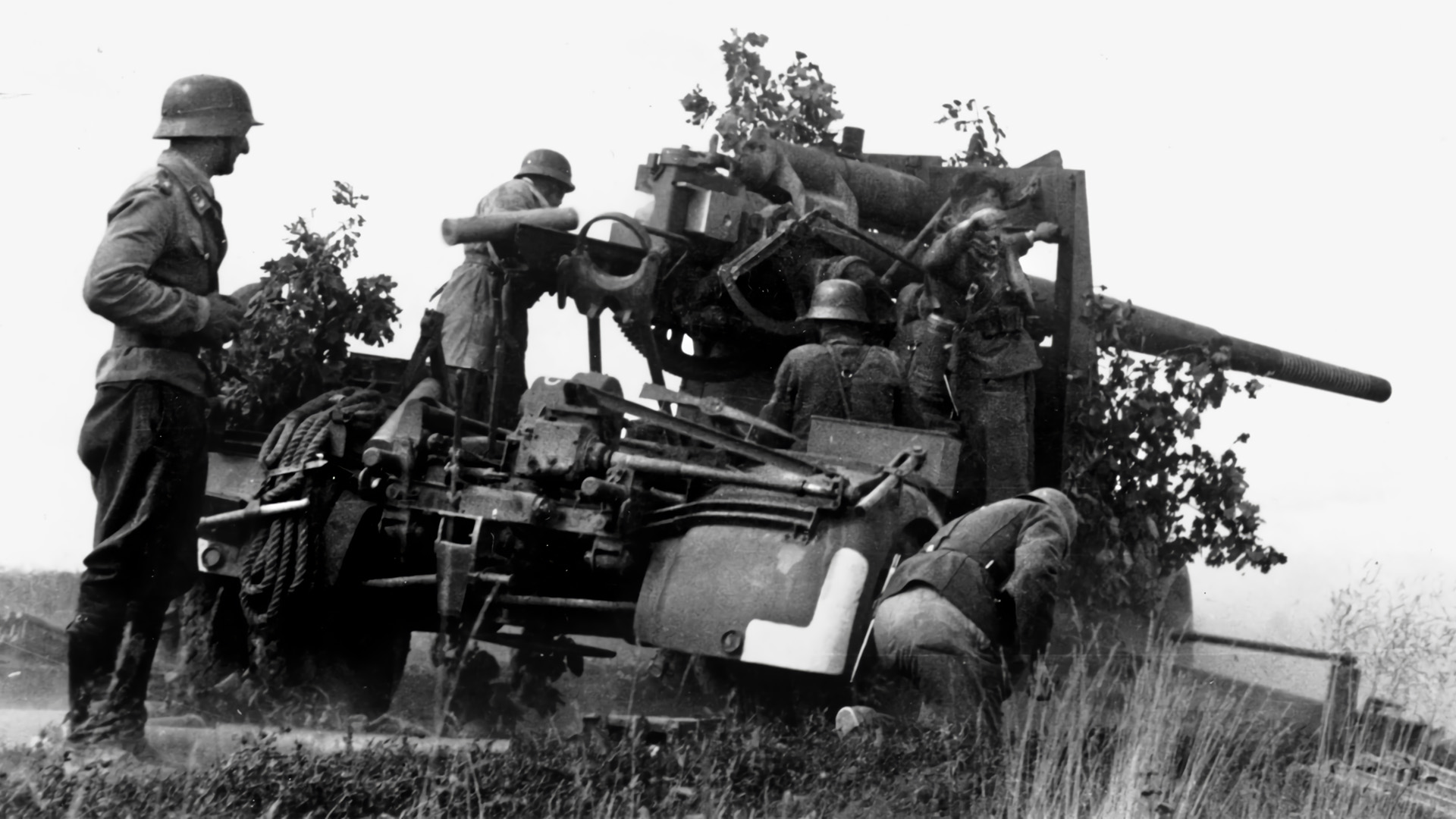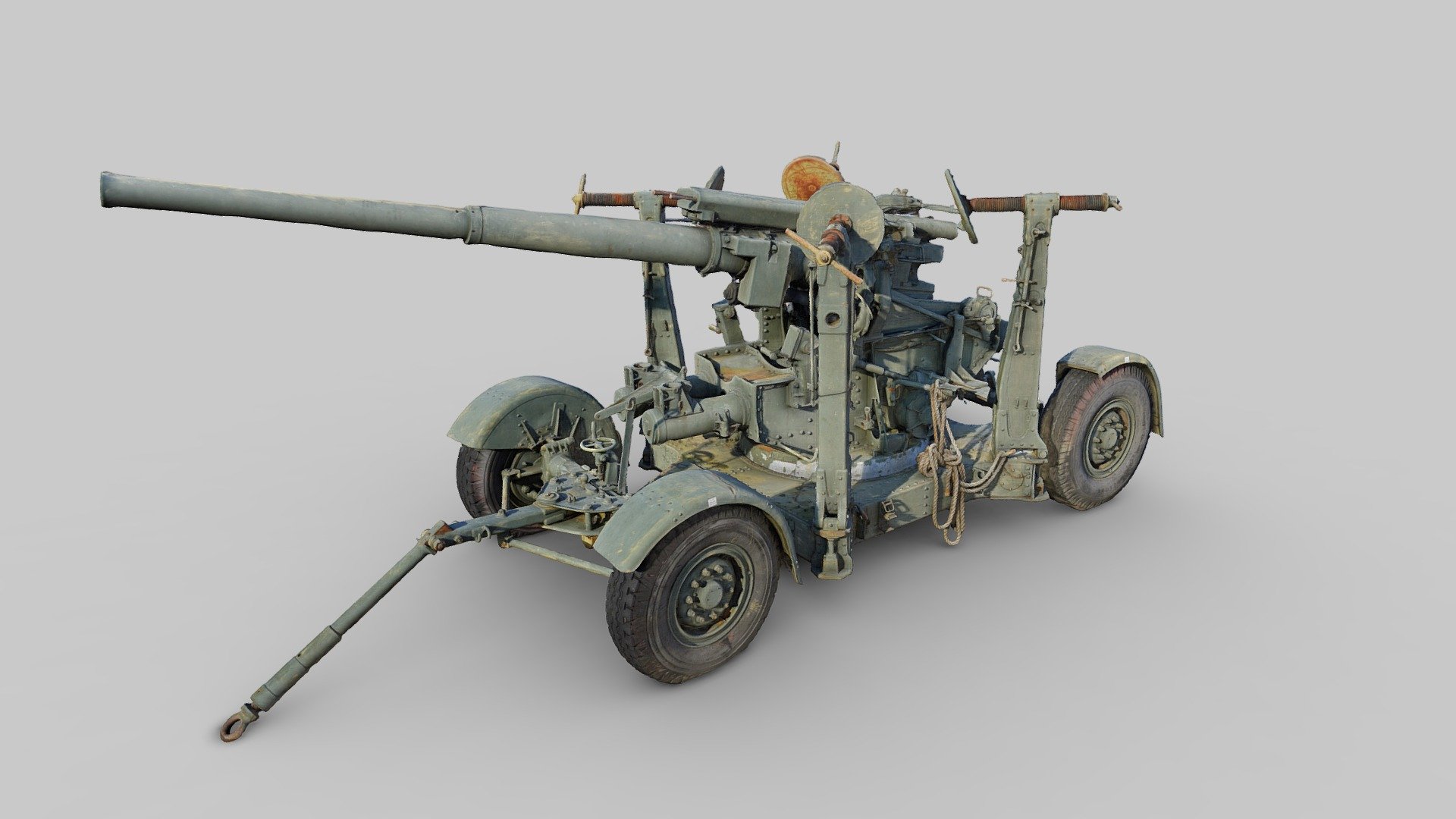Anti Aircraft Flak - In Germany, Italy, Japan, the "Flak" (anti-aircraft gun), together with enemy fighters, was the main threat to the Allied bombers.
An Air Force training video explains the FlaK (from the German word for anti-aircraft gun - Flugabwehrkanone): how heavy, compact and automatic guns work, how they can target the formations of flying aircraft at 27,000 feet and 320 mph and evasive maneuvers for bomber pilots to avoid being hit by anti-aircraft fire.
Anti Aircraft Flak

Obviously, the technology behind AAA (Anti-Aircraft Artillery) has improved a lot since 1944 with radar-guided bursts, but concepts like
Flak: Myth Versus Reality With Donald Nijboer
Still used as the basis for the calculations required to shoot down air raiders around the world; so, even if you don't face the issue in Japan or Germany like the US pilots did. 70 years on, anti-aircraft artillery batteries still pose a threat to modern warplanes equipped with the latest EW (Electronic Warfare) suites and stealth planes.
David Cenciotti is a journalist based in Rome, Italy. He is the founder and editor of "The Aviationist", one of the most popular and widely read military aviation blogs in the world. Since 1996, he has written for major magazines around the world, including Air Forces Monthly, Combat Aircraft, and many others, covering aviation, defense, war, business, intelligence, crime and cyberwar . He has reported from the US, Europe, Australia and Syria, and has flown numerous combat aircraft with various air forces. He was formerly a 2nd Lt. of the Italian Air Force, a private pilot and graduate in Computer Engineering. He has written five books and contributed to many others.
NATO agreed to deploy Patriot missiles on the Turkish-Syrian border to protect Turkey from cross-border attacks from the Syrian side. On January 4, US forces began arriving at Incirlik airbase, […]
Tunguska anti-aircraft weapon system jammed device. Pictures from different perspectives. The following videos show the 9K22 Tunguska anti-aircraft weapon system going out of control during a live fire. Although some sources say […]
Afv Club 1/35 German 8.8cm Flak 18 Anti Aircraft Gun Af35088
Update Apr. 11, 2012 19.50GMT The following video, posted by a visitor to The Aviationist Facebook page shows anti-aircraft fire from opposition forces / Free Syrian Army (FSyA) targeting a Mil helicopter Mi-8/17 Hip of the Syrian regime. […]
Email us at sales@ if you would like to support this site by purchasing the original patch, which is only available through this website! This article requires additional citations for verification. Please help improve this article by citing reliable sources. Non-store items can be challenged and removed. Find sources 8.8 cm Flak 18/36/37/41" – news · newspapers · books · scholar · JSTOR (April 2014 ) (Learn how and what to remove this template message)
The Flak 8.8 cm 18/36/37/41 is a German 88 mm anti-aircraft and anti-tank gun, developed in the 1930s. It was used extensively by Germany during World War II and is one of the most recognizable German weapons of the conflict. The development of the original model resulted in a wide variety of guns.

The name applied to a series of related guns, the first officially known as the 8.8 cm Flak 18, the improved 8.8 cm Flak 36, and later the 8.8 cm Flak 37.
Cm Flak 40
Meaning "anti-aircraft cannon", the original purpose of the weapon. In glish, "flak" became a geric term for firefront-end. In informal usage, the guns were called Acht-acht ("eight-eight") by the Germans and "twenty-eight" by the Allies.
Air defense units are usually deployed using a Kommandogerät ("commanding device") fire control computer or a portable Würzburg radar, which is responsible for the high level of accuracy against aircraft.
The flexible carriage allowed the 8.8 cm Flak to fire in limited mode against a tank while still on its wheels;
Its successful use as an improvised anti-tank gun led to the development of a tank gun based on: the 8.8 cm KwK 36, with the abbreviation "KwK" standing for Kampfwag-Kanone (literally "war wagon cannon ", or "fighting ". vehicle cannon"), which was intended to be placed in a gun turret as the main weapon of the tank.
Why The German 88mm Gun Was The Best Throughout Wwii
In addition to these Krupp designs, Rheinmetall developed a more powerful anti-aircraft gun, the 8.8 cm Flak 41,
Which is produced in small quantities. Krupp responded with another long-barreled 8.8 cm prototype gun, which was developed into the 8.8 cm PaK 43 anti-tank gun and tank destroyer used for the Elefant and Jagdpanther, and the 8.8 heavy tank gun cm KwK 43 mounted with a turret of the Tíg II.
WW1 British Empire soldiers with a captured German 8.8 cm Flak 16 anti-aircraft gun, August 1918

Originally, the anti-aircraft artillery guns of World War I were modifications of medium-caliber weapons, mounted to fire at higher angles. In 1915, the German leader realized that he was useless for anything more than a deterrent, even against the weak balloons and slow-moving aircraft of the time.
How Germany's 88mm Anti Aircraft Gun Introduced The Flak Into The Military Lexicon
With the improvement in aircraft performance, many armies have developed special AA guns with high muzzle velocities - allowing the projectiles to reach much higher. It was this muzzle velocity, combined with projectiles of high pressure, that made the 8.8 cm Flak one of the greatest anti-tank guns of World War II.
The first such German gun was introduced in 1917, using the 8.8 cm caliber common to the Kaiserliche Marine (navy).
After the war was lost, Germany was prohibited under the terms of the Treaty of Versailles from purchasing new weapons of mass. However, the Krupp company began to develop a new gun with Bofors in Sweden. Bofors was largely owned by Krupp from 1921. The original design was a 75 mm model.
During the prototype stage, the army asked for a gun with more capacity. The photographers started again, using the 88 mm standard.
A Cut Out Of A Flak 30, 20mm Anti Aircraft Gun Used Extensively By Nazi German Forces During Ww2 Stock Photo
88 prototypes were first produced in 1928. This first model, the Flak 18, used a one-piece barrel with a length of 56 calibers, leading to the common designation L/56.
The Flak 18 was mounted on a cross-shaped gun carriage. A simple-to-operate "semi-automatic" loading system ejects spent shells, allowing them to be reloaded simply by inserting a new shell into the tray. The gun flashes and rings; during the return stroke, the empty case is thrown back through the levers, after which a bracket moves and retracts the gun. As a result it fired 15 to 20 rounds per minute, which was better than similar weapons of the time.
High-explosive weapons are used against aircraft and personnel, and armor-piercing and high-explosive anti-tank weapons are used against tanks and other armored vehicles.

Mass production began when the Nazis came to power in 1933, and the Flak 18 was available in small numbers while Germany was involved in the Spanish Civil War. It quickly proved to be the best anti-aircraft weapon available.
Cm Flak 18
The flak separation with 88s was accurate and flexible in combat against ground targets especially, the high muzzle velocity and the large caliber made it an excellent anti-vehicle and anti-bunker weapon. This experience also reveals many small problems and opportunities to improve the pot.
The vehicle of the Flak 18 allows it to fire emergency still on its wheels and without its launchers, but with a limited range and height.
For a normal emplacemt, a single-axle bogie is removed from the front exterior and one from the rear, side spoilers are suspended from a vertical position to the ground; total setup time is about two and a half minutes.
Both approaches make the gun more suitable for fast-moving operations, a blitzkrieg concept. The weight of the gun meant that only large vehicles could move it, the Sd.Kfz. 7 half way became a common prime mover.
Army Air Force Video Explains How To Evade Flak (anti Aircraft Fire) In Wwii
Target markers are attached to the ctral controller of each of the four guns in a battery, allowing for coordinated fire. In fact, with the automatic loading system, the job of the gun ranges is to keep the barrel of the gun trained on the target area based on the signals from the controller. The loader keeps the weapon fed with live ammunition that explodes immediately upon insertion – while the gun casing targets the weapon according to data.
North Africa, Flak 8.8cm 18 towed behind Sd.Kfz. 7, with its sides raised so that the beam can be seen behind the shield of the gun
Many of these improvements were incorporated into the Flak 36, which had a two-piece barrel for easy replacement of wear lines. Flak 36s often have an armored wing that provides limited protection for the gunners. These wings can also be retrofitted to older Flak 18s.

The later model was the Flak 37, which included updated instrumentation to make it easier for gunners to follow instructions from a director. In some sources it is wrongly stated that the Flak 37 was not equipped for anti-armor operations. In fact all 8.8 cm Flak guns are capable of operating in two positions.
Flak 88 In Weapons
The parts of the different versions of the guns are interchangeable, and it is common for different parts to be "mixed and matched" in a given example.
Both Flak 18 and Flak 36 have the same permanently attached fuze mechanism with two "Zünderstellbecher". The Flak 37/41 has the simpler fuze set of the Flak 41 8.8-cm.
As early as 1939
Aircraft flak, anti aircraft systems, anti aircraft artillery, stinger anti aircraft missile, what is anti aircraft flak, anti aircraft gun, anti submarine warfare aircraft, anti-aircraft, anti aircraft missile, anti aircraft vehicle, aircraft anti collision lights, anti aircraft game
0 Comments